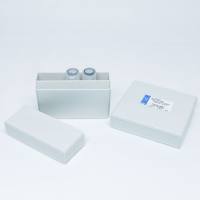Fluorescence Genotyping for Screening Cryptic Telomeric Rearrangements
互联网
505
Mental retardation (MR), defined as an intelligence quotient (IQ) less than 70, represents the most frequent serious handicap in children and young adults. Moderate to severe MR (IQ<50) encompasses 1% of the population and the prevalence increases up to 2–3% if mild mental retardation (50<IQ<70) is included (1 ,2 ). Mental retardation may result from multiple causal factors: environmental factors (fetal alcohol syndrome or perinatal hypoxic-ischaemic damage for example), chromosomal factors (such as trisomy 21), or monogenic diseases (Fra-X syndrome for example). Chromosomal abnormalities, such as deletions, duplications or uniparental disomies (UPD) that result in an alteration of normal gene dosage, are a common cause of mental retardation found in 12% of a random series of mentally retarded patients (3 ). The responsible chromosomal segment is usually small (< 10 Mb), but encompasses multiple genes which contribute to the phenotype independently. Routine chromosome analysis allows detection of duplications and deletions in the 10 Mb range, and therefore remains above the threshold for phenotypic effect. Despite numerous attempts to increase reliability and resolution, there is still no practical way to screen the entire genome for rearrangements, regardless of size or chromosomal localization.









